Mastering muddy mixes perfectly – in only 12 steps

1 We need stems!
In the magazine downloads of the Beat mastering feature in Beat issue 12/23 you‘ll find a suitable recording that we want to polish: a live session from our authors Daniel and Marco. Of course you can also load one of your own tracks. With a little EQing, a stereo expander and limiter you can achieve something here, but it doesn‘t really rock. So we need individual tracks and we get them from Splitter.
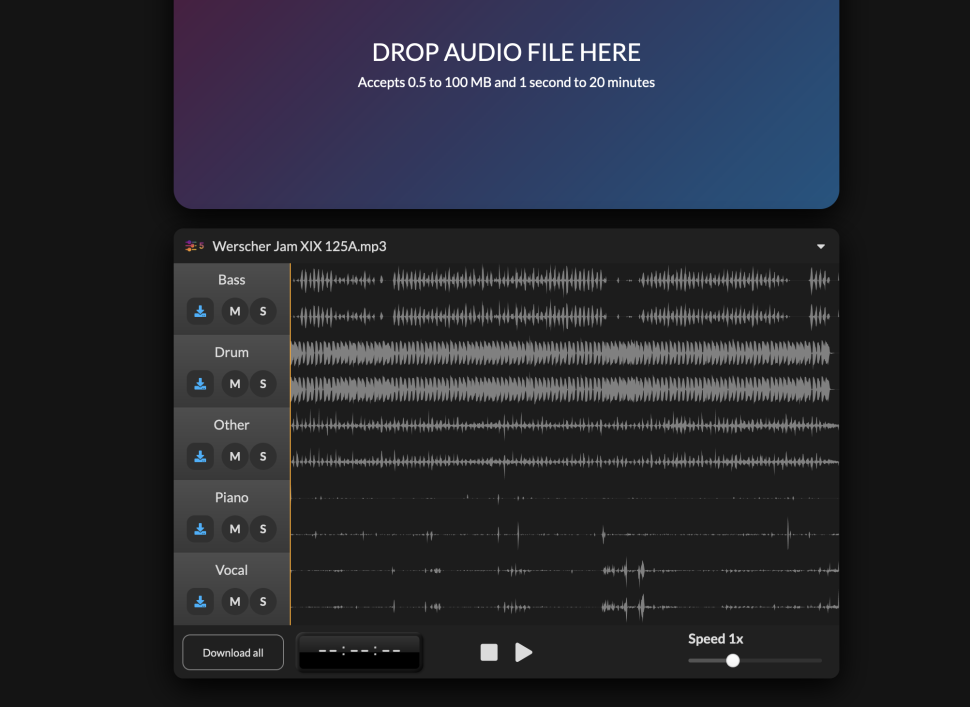
2 Import into the DAW
Simply register, upload the track and wait a moment. We then get five stems that we load into the DAW. Two of them are immediately eliminated because piano and vocals are not included. That leaves bass, drums and melody. The latter is dull and lacks space, so we‘ll help here – with a cool tape sound. We use u-he satin.
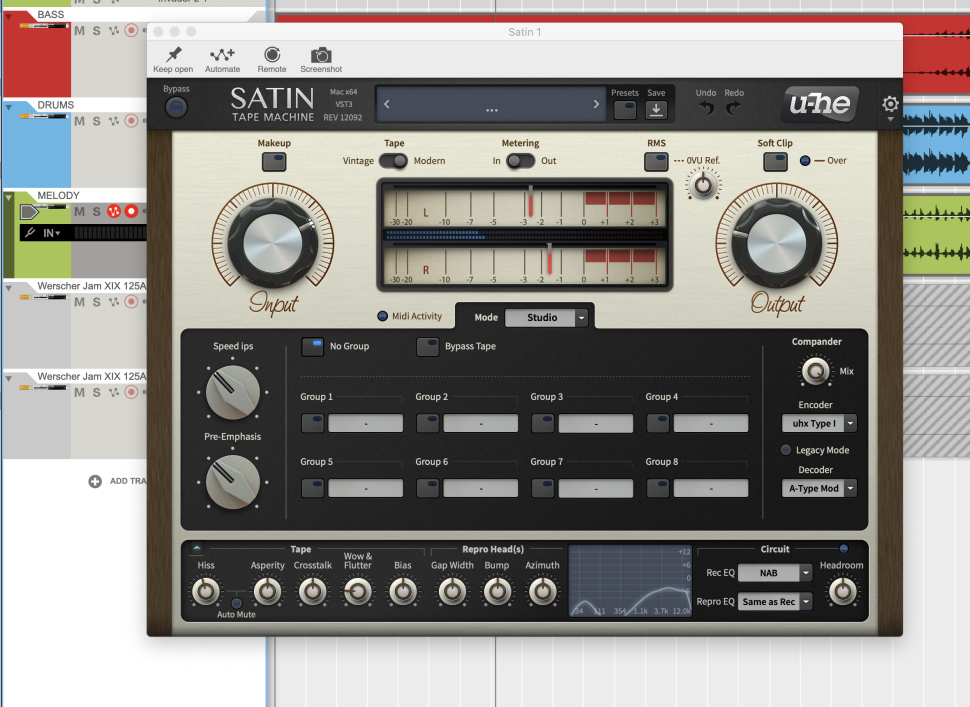
3 Spice up the melody
In studio mode, the plug-in offers tape, where we first select the encoder and decoder, as these mainly determine the sound. Model uhx Type I, together with A-Type mod, ensures an accent on the highs, which we further expand with Speed ips and Pre-Emphasis to 10 o‘clock each, without producing a sound that is too harsh.
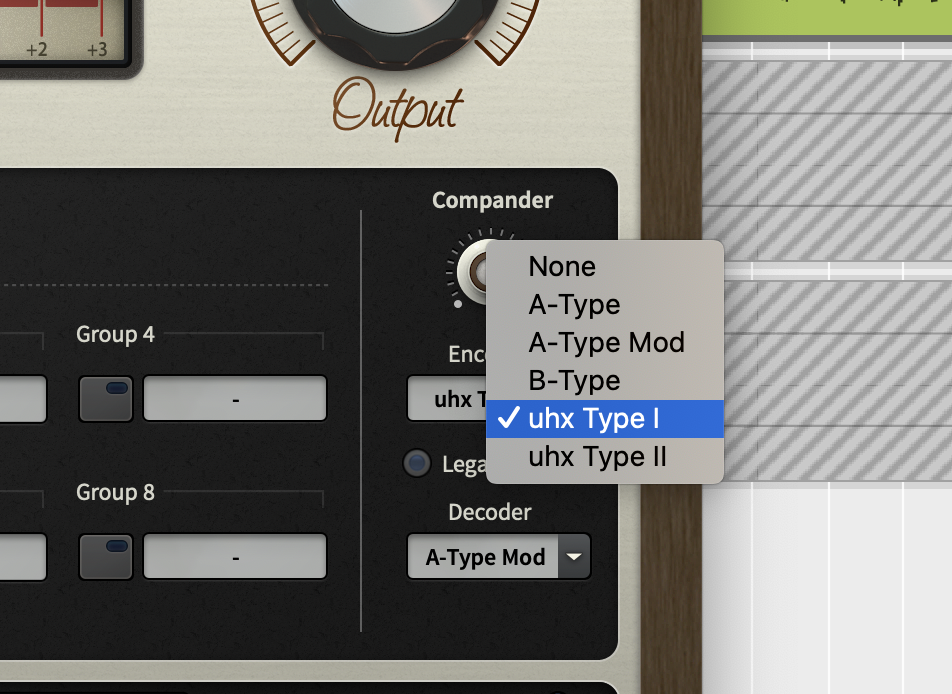
4 Encoder types
By the way, it‘s worth experimenting with the five encoder and decoder models because they all emulate different technologies. These were used, on the one hand, to suppress noise during recording and, on the other hand, to add treble to material recorded on tape. And each of them has its own unique characteristics.
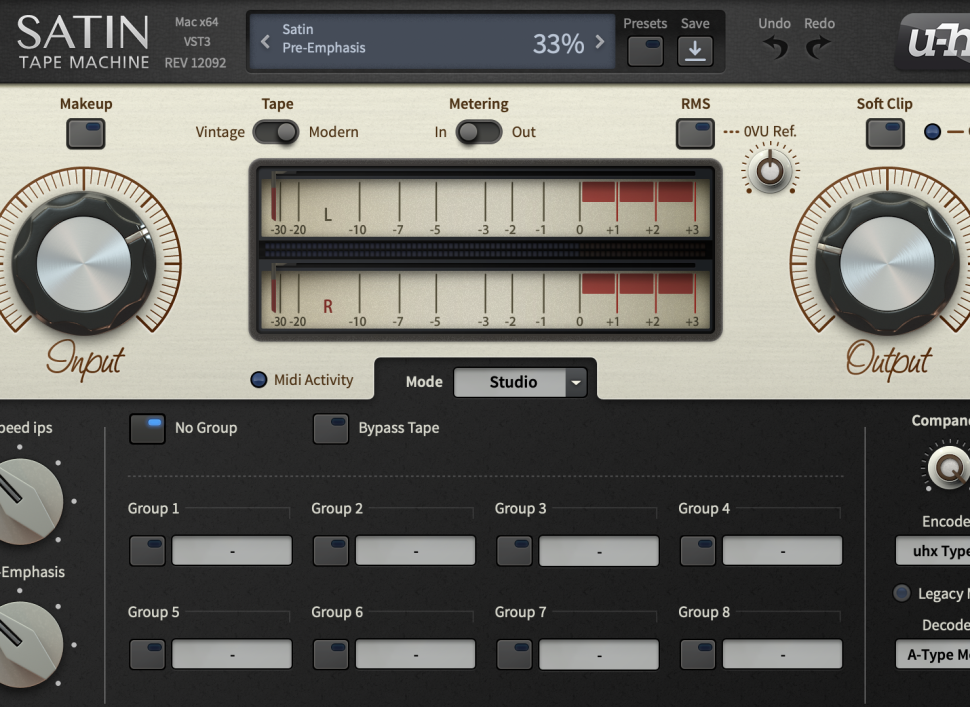
5 Compression
Back to the context: So that the effect is clearly audible, we turn the input up to 2 o‘clock. We compensate for this with the output at 9 o‘clock. So the compression is really pumping and adjusts the sound the way we want. If more treble is needed, you can turn up the input further (and/or choose a different model).
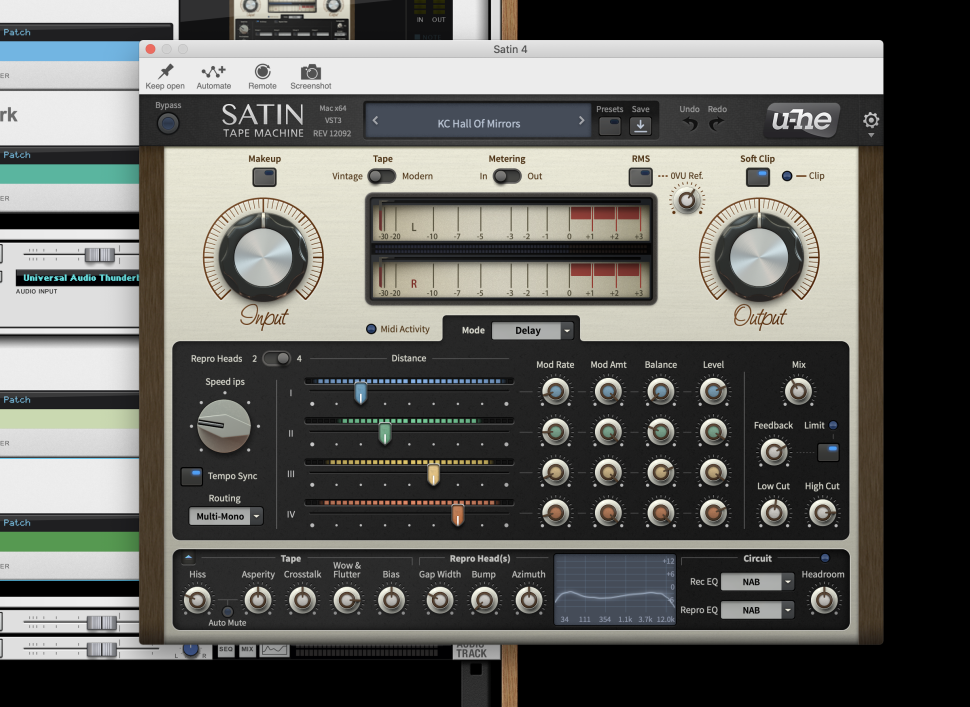
6 Room for melodies
We are happy with the sound, we just need more width. We also use an instance of Satin for this, but this time in delay mode with the preset KC Hall Of Mirrors. However, we activate Tempo Sync, adjust the tempo and reduce the effect significantly to 11 o‘clock using the mix button. The four delays deliver a subtle but clear echo.
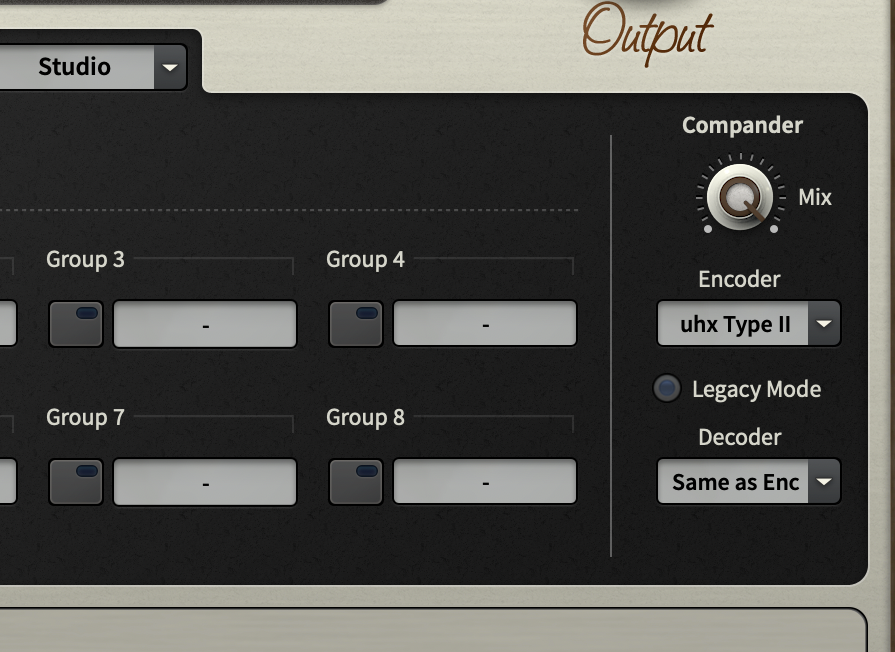
7 Now the drums
That was the comparatively easy part, because now come the drums. To ensure that the sound remains homogeneous, we stick with the same plug-in: Satin. To add more treble, we choose uhx Type II as the encoder and Same as Encoder for the decoder. To ensure maximum quality, we turn up the speed ips to full power, as well as the pre-emphasis.
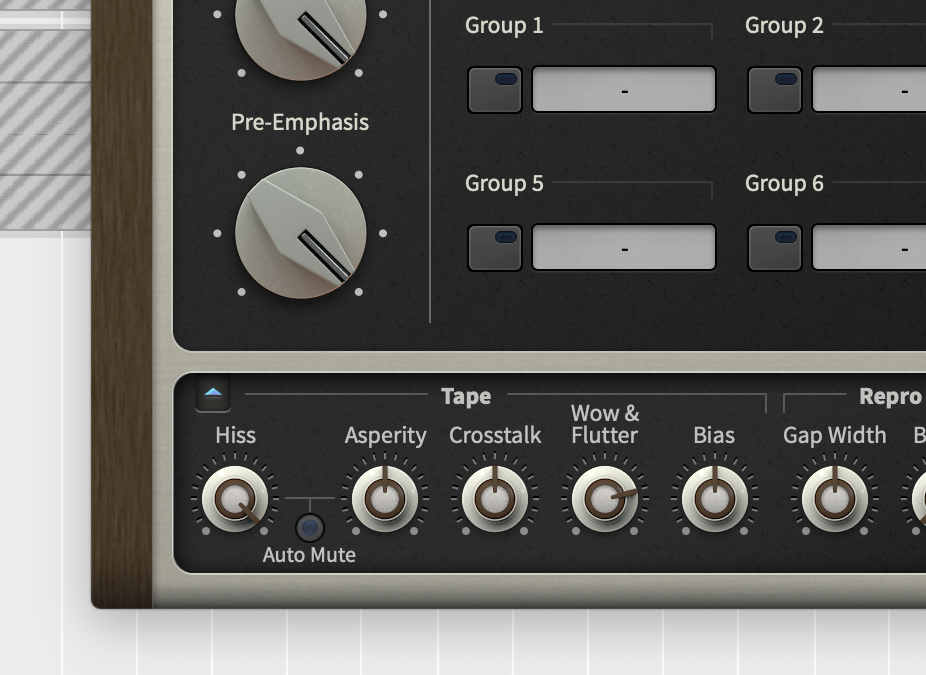
8 Slight noise
This time we open the service hatch at the bottom left of the plug-in to turn Hiss to maximum. The effect is subtle, but that little bit of noise is just right for now. To give the drums more stereo dimension, we load another instance of Satin, this time with the KC Peanut Butter preset.
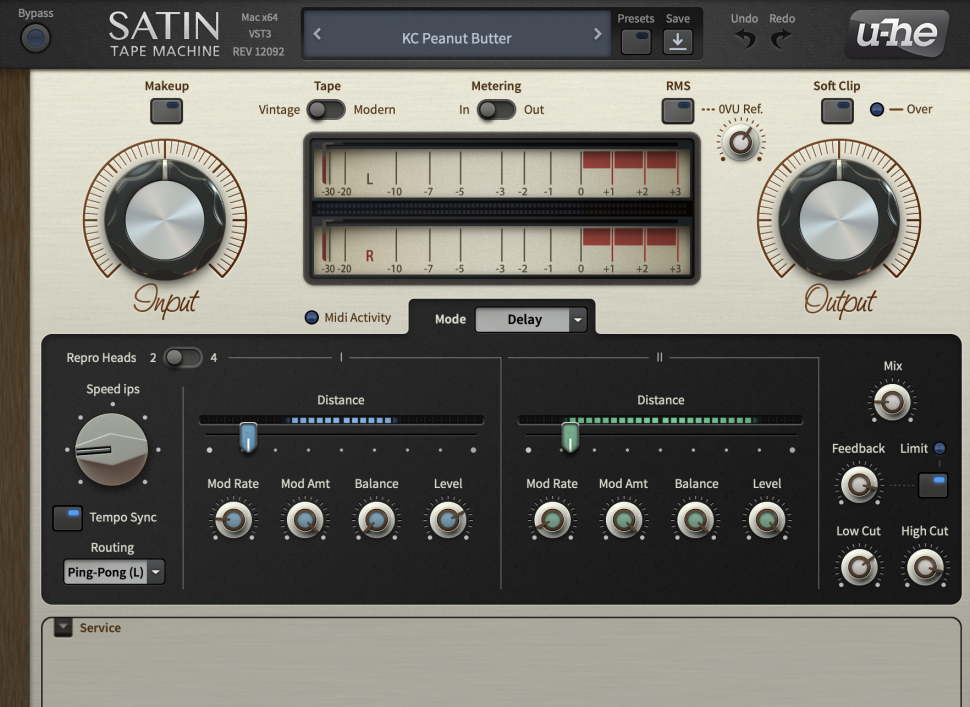
9 Room for drums
The two delays in ping-pong mode fit perfectly. Here too, we activate sync again and reduce the mix to 9 o‘clock so that the echoes are subtle and you almost only notice them when they are missing. We also set Low Cut to 2 o‘clock and High Cut to 4 o‘clock so that neither bass nor biting highs cause mud in the mix.
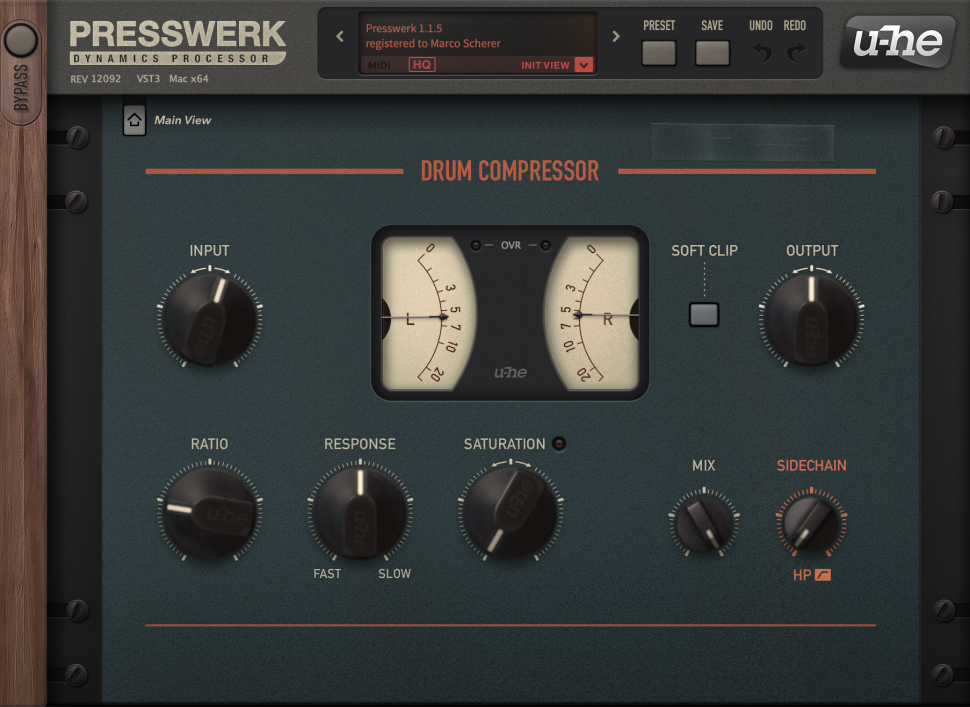
10 Drum compression
Now we want to limit the dynamics of the drums, because the stem separation makes them seem a bit woody, choppy and stiff. For this – again to maintain a homogeneous sound – we use u-he‘s Presswerk, whose INIT VIEW we switch to the drum compressor. The aim is to level the gain reduction between 5 - 7.
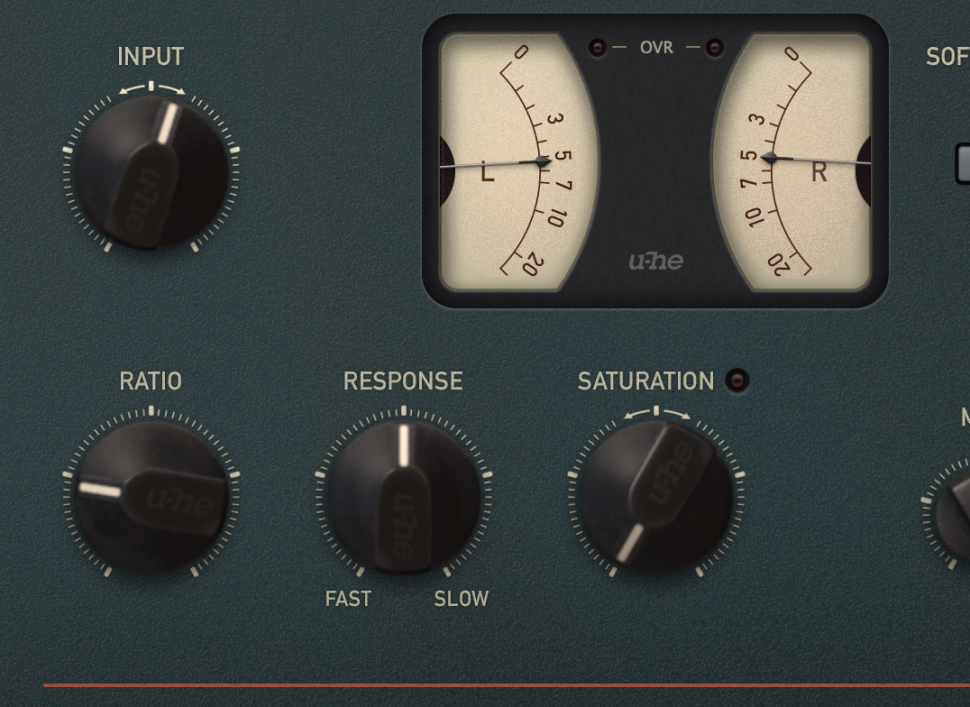
11 Don‘t exaggerate
By the way, this value applies to mostcompressors and limiters – especially when mastering tracks. If we turn RATIO to 9 o‘clock and INPUT to 1 o‘clock, the goal has already been achieved and the drums sound significantly less choppy. And while we‘re at it, let‘s load another instance of Presswerk into the master channel.
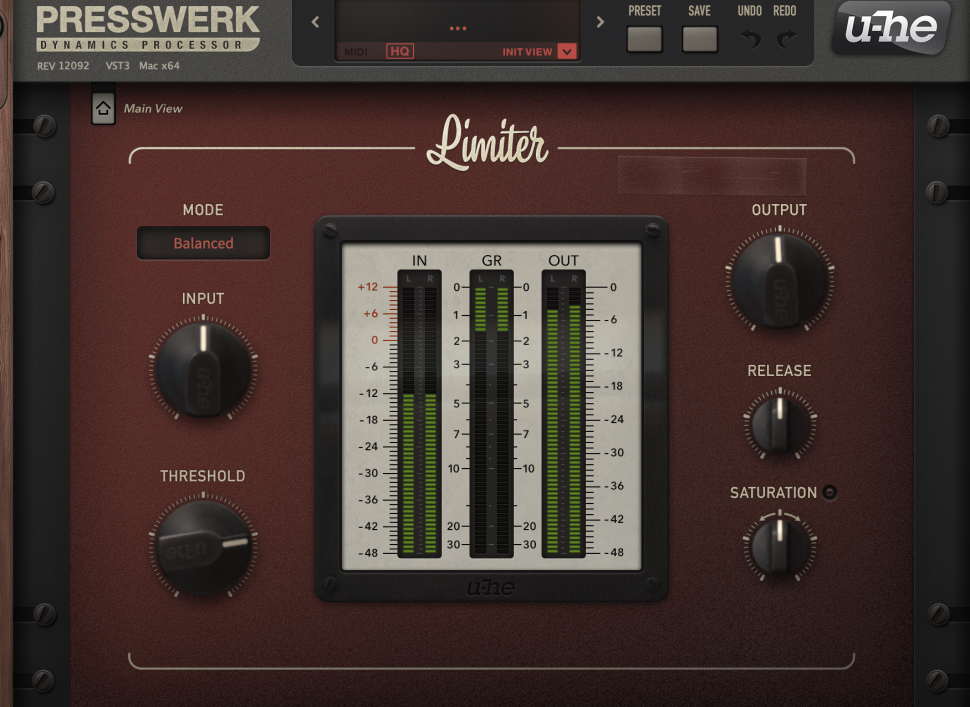
12 Final limiter
This time we use the limiter as INIT VIEW, set OUTPUT to -0.4 dB (this is also our recommendation for every limiter in mastering) and turn THRESHOLD down until the gain reduction fluctuates between -3 and -6 dB at the loudest point. And voil� , we turned a musty recording into a real stomper with two plug-ins.
Want to know more about Satin and Presswerk?
- Satin is a "luscious tape machine": Nothing else quite sounds like tape. Satin puts the legacy of tape recording in your hands: from top-of-the-line multi-track consoles to humble cassette decks. All the good (saturation, transient smoothing, compression) as well as the bad (noise modulation, flutter, hiss) qualities are under your control. Construct your (im)perfect tape machine. Find out more on the u-he website.
- Presswerk is a "dynamics processor with musical soul": Presswerk is more than an emulation of a single hardware compressor. Like Satin, Presswerk is a toolkit, drawing ideas and inspiration from a number of sources. It starts with warmth of classic analogue units and adds features only possible in the digital realm. The result is a powerful compressor with a rich feature set and a very musical soul. Presswerk was designed to fit into any workflow, no matter what task you throw at it. Presswerk gives you the tools for better sound. Dive deeper into Presswerk.
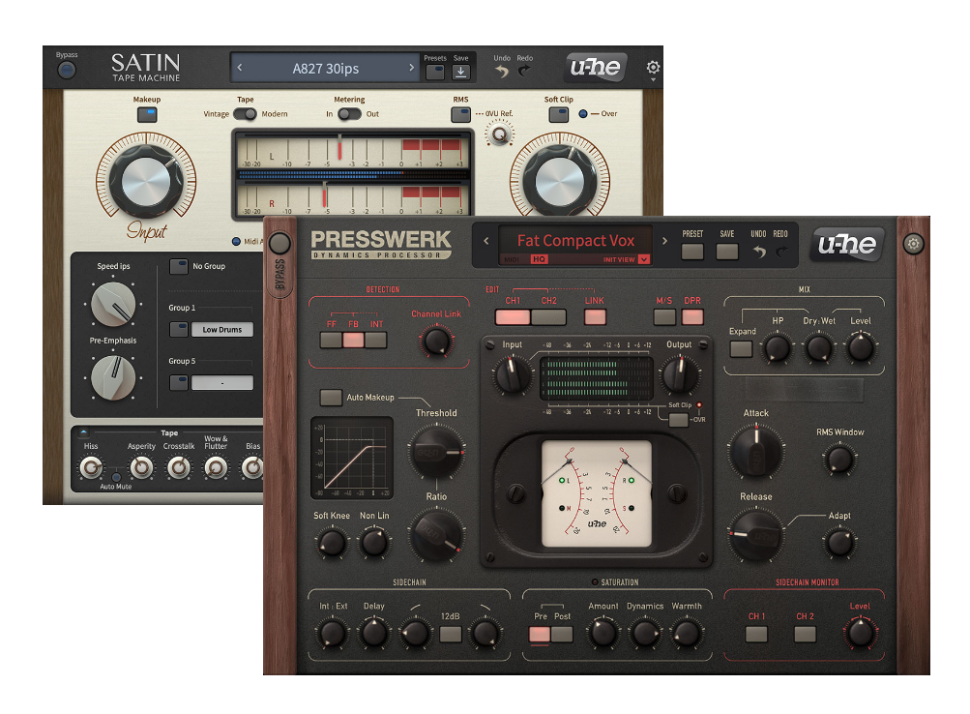
Want more workshops?
In addition to our series for Cubase, Logic, Ableton Live, Digitakt, Reason and FL Studio, every BEAT mag issue contains useful workshops and tricks for producing, jamming, mixing, mastering, arranging and many other topics. Subscribe to BEAT and never miss our future hacks! And don’t forget about our subscription gifts for Platinum Plus Plans – free choice, of course!
Want more? Get more!



Subscribe to the digital edition of BEAT Magazine via Plugins-Samples.com and get more gear, in-depth workshops, reviews and 11 GB exclusive plugins and new sounds with every monthly issue!
Subscribe to Beat Magazine for only 4.99€ per month
